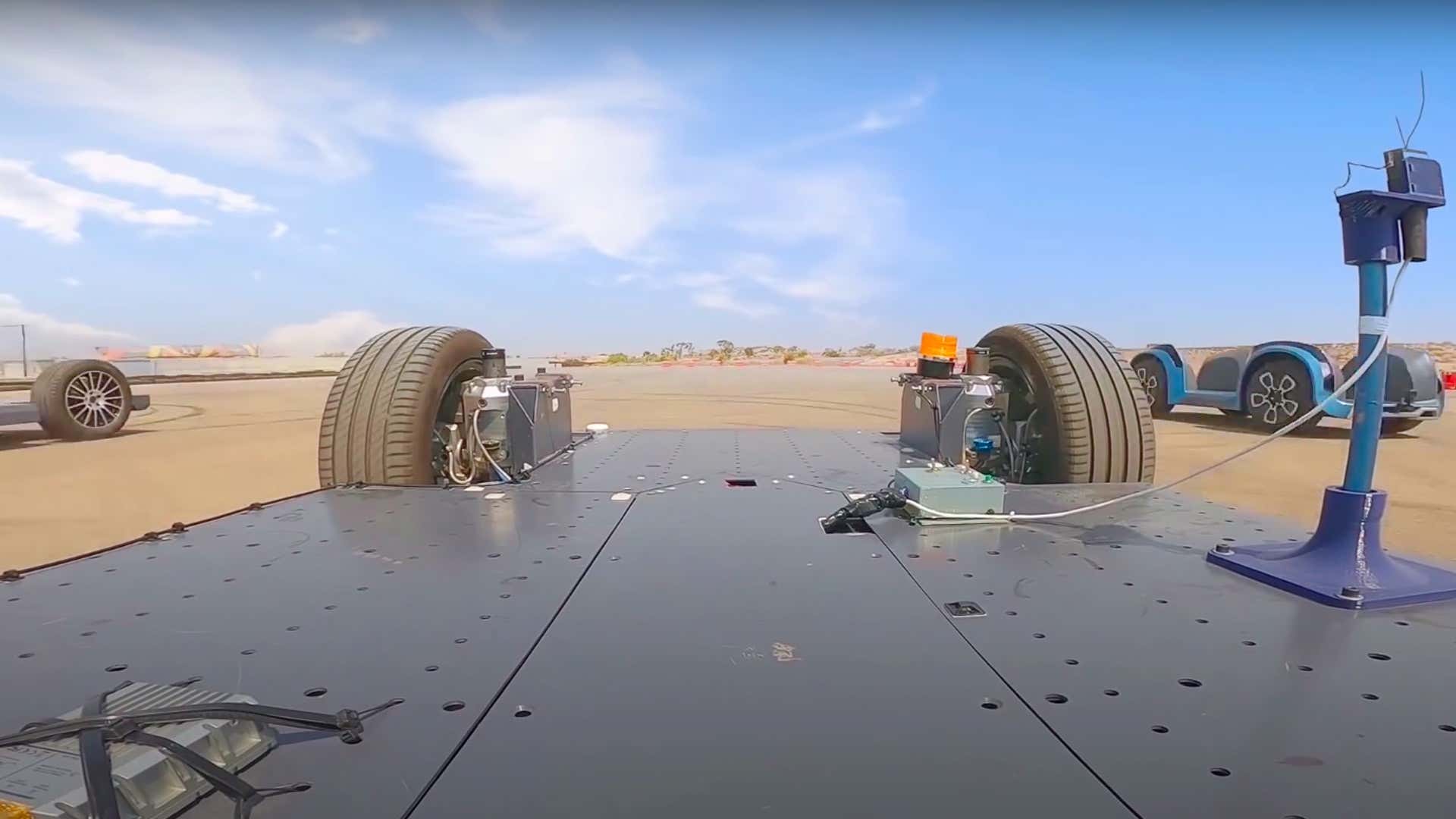When it comes to the future of electric vehicles, should automakers worry less about batteries and drivetrains and more about what gets built right on top of them? Israeli startup REE Automotive thinks so. It has now prototyped a range of heavy-duty skateboard-style beds capable of carrying up to 7 tons for car and van designers to add their own ideas on top of.
One of the fun things about electric motors is that they’re really small and don’t need to aspirate, so you can put them in all kinds of weird configurations. The toy industry has been doing this for decades and the rise of using the word e-mobility with a straight face has seen a plethora of skateboards, scooters and weird gyroscopic balance wheels take advantage of the same concept.
Cars, though, we tend to keep roughly to the same shape. Barring out-there Batmobile projects like the Ariel Hipercar or maybe Toyota’s own modular, mobile expo-slash-food-van concept, the shape of cars has basically turned out to be pretty popular for basically getting the job done.
That may change with the advent of mass-produced EVs. While General Motors has played with the idea of an electric skateboard platform for decades now, REE is taking the concept and really running with it. There are still four wheels, driven by individual motors called REEcorners just to emphasize they’re at the expected points on the vehicle. But everything that drives it is contained in the flat platform.
REE is doing that by using “X-by-wire” for everything. Steering and braking are done completely electronically, so there’s no need for any mechanical connection between whatever you give the driver to control that—might as well be an Xbox controller, so long as you configure it right.
Drive-by-wire isn’t a new technology, with even race cars and high-end vehicles using brake-by-wire. But to isolate the system so completely, as a base just to be built on, feels almost revolutionary.
It also means these vehicles are perfectly set up for AI or pre-programmed pattern driving, since everything’s already done via a computer. To a human driver, though, this might seem a bit dissociative from the driving experience. Any sense of force feedback from the steering wheel or brake would be as fake as sitting in a sim rig, the cabin above pretty much hermetically sealed away from everything making the car go.
Whether that matters in, for instance, delivery vehicles is a different question. Has anyone ever really gone off about the pure joy of driving a UPS truck? And the P4 platform, the largest in the video below, is built specifically for that in the U.S. market, carrying up to 4.5 tons.
The video certainly makes them look like they actually run and drive, but as with most EV startups, some skepticism is probably healthy. Having said that, all the tech these vehicles use is conventional—the track event shown uses cars driven remotely rather than through autonomy, but the “X-by-wire” is as sound as it should be.
Indian automotive giant Mahindra recently signed up with REE to explore future commercial vehicle developments. It’s hard to argue against a future where easily customizable, medium-weight deliveries can be managed by safe, clean technologies. After all, there’s nothing to stop you from making the top look cool as heck.
Source: Read Full Article

